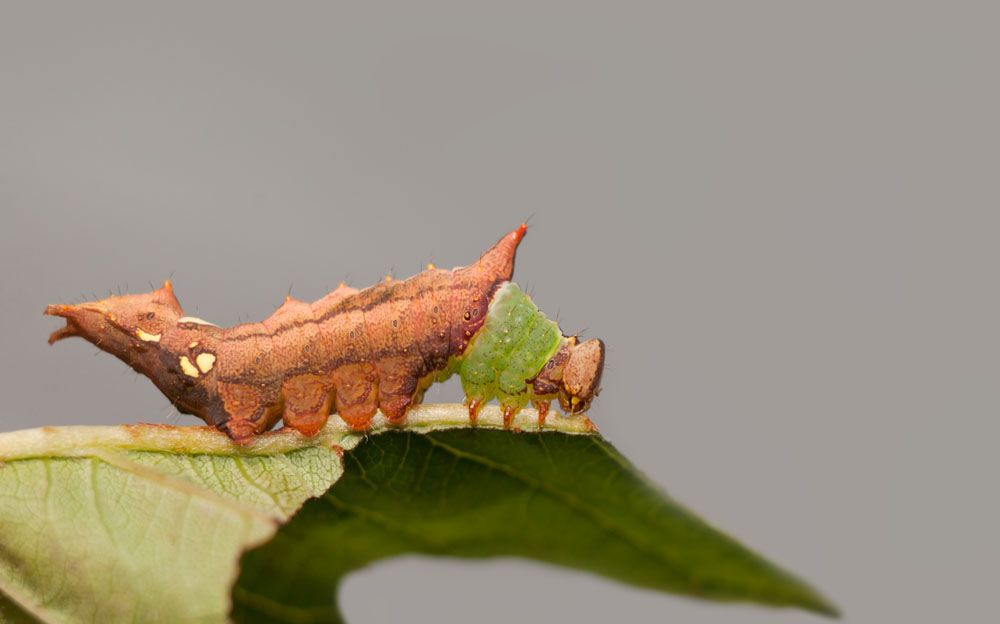
Unicorn Caterpillar – Schizura unicornis
Unicorn Caterpillar – Schizura Unicornis
Scientific Name: Schizura unicornis
Common Name: Unicorn Caterpillar Moth
Distribution: Canada, Georgia, North America, USA
Host plants: Alder, apple, aspen, birch, elm, hawthorn, hickory, willow and other broadleaf trees and shrubs.
Identification: A species of moth belonging to the Notodontidae family is called Coelodasys unicornis, often known as the unicorn caterpillar moth, unicorn prominent, or variegated prominent. It is found in North America south of the Arctic and was first described by James Edward Smith in 1797.
There is a 24-35 mm wingspan. The forewings are brown, rose, and yellowish-colored, with a dark gray color and varying shades. Male hindwings are tinged with dark gray, whereas female hindwings are filthy white. In the south, adults are out on the wings from February to September, and in the north, from May to August. Every year, there is just one generation.
Life Cycle: The first and third thoracic segments are brilliant green, although they are brown. The head has brown mottling. In the south, larvae are present from May to October, whereas in the north, they are present from June to September. The pupae stage of the species overwinters in a cocoon under leaf litter.
Damage: Adults do not harm others. When caterpillars eat leaves, they might create holes in them or eat the leaves whole.
Management: Make a soap spray that kills insects. To make this spray, just combine one quart of water and two teaspoons of soap in a spray bottle. Give the mixture a good shake, and then spray it straight onto any caterpillars you come across.
